|
 Mycena cystidiosa Mycena cystidiosa
SynonymsFayodia cystidiosa
Mycena metuloidifera
Mycena hispida
BiostatusPresent in region - Indigenous. Non endemic
Images (click to enlarge)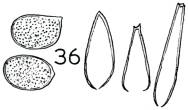 | 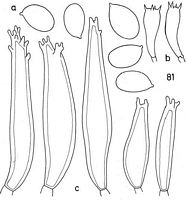
Caption: 81-Mycena cystidiosa: a. spores; b. basidia; c. pleurocystidia. | 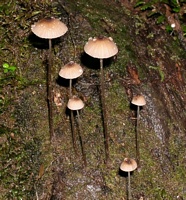
Owner: J.A. Cooper | 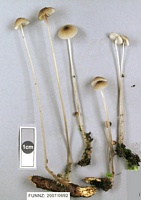
Owner: J.A. Cooper | 
Caption: top left: pleurocystidium. Top right: cheilocystidia #1, bottom: cheilocystidia #2.
Owner: J.A. Cooper | 
Caption: FUNNZ2007/0692
Owner: FUNNZ | 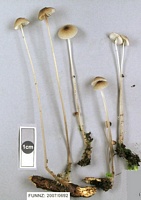
Caption: FUNNZ2007/0692
Owner: FUNNZ | 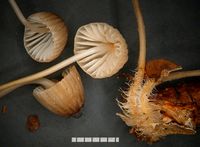
Owner: J.A. Cooper | 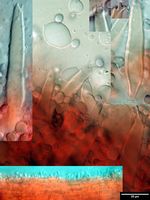
Caption: metuloid cystidia. Lower cap surface (Melzers)
Owner: J.A. Cooper | 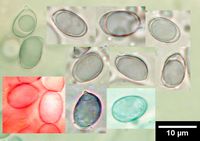
Caption: spores (Melzers)
Owner: J.A. Cooper | 
Owner: J.A. Cooper |
Article: Horak, E. (1971). A contribution towards the revision of the Agaricales (Fungi) from New Zealand. New Zealand Journal of Botany 9(3): 403-462 (http://www.rsnz.org/publish/abstracts.php).
Notes: Fayodia cystidiosa Stevenson (29 D) Fig. 6 = Mycena cystidiosa (Stevenson)
comb. nov. (Basionym: F. cystidiosa Stevenson, Kew Bull. 19: 46, 1964)
This is a very peculiar species of the genus Mycena. The conspicuous cheilo-
and pleurocystidia are apically ornamented with irregular thick-walled, hyaline
excrescences. Spores 8.5-12 -X 6-7.5 µ, oval, hyaline, weakly amyloid, smooth.
Article: Stevenson, G. (1964). The Agaricales of New Zealand: V. Kew Bulletin 19(1): 1-59.
Description: Pileus 6-12 mm diam., light brown with dark brown umbo, indistinctly striate and fluted, somewhat velvety, margin paler and frilled; flesh white beneath umbo, fawn above gills. Gills sinuately adnexed, cream, some with dull pink blotches, moderately distant, bristling with cystidia. Stipe 6-8 cm x 1-2 mm, cream above, brown below, smooth, hollow, brittle, with spreading hyphal hairs at base. Spores 9-10 x 7 µm, amyloid, thick-walled, inner wall sieve-like. Cheilo- and pleurocystidia 25-40 x 8-13 µm, very abundant, thick-walled, weakly amyloid (Fig. 36). Hymenophoral trama and tissue of pileus pseudo-amyloid.
Habitat: Amongst litter, Wellington Botanic Garden, 2.6.1949, Stevenson (type).
Notes: Half-sized spores were also seen in this collection. The species may be found to have 2-and 4-spored basidia, as it appears to have 2 sizes of spores. Although the spores are smooth in outline they appear as though rough because the inner wall is irregular.
|